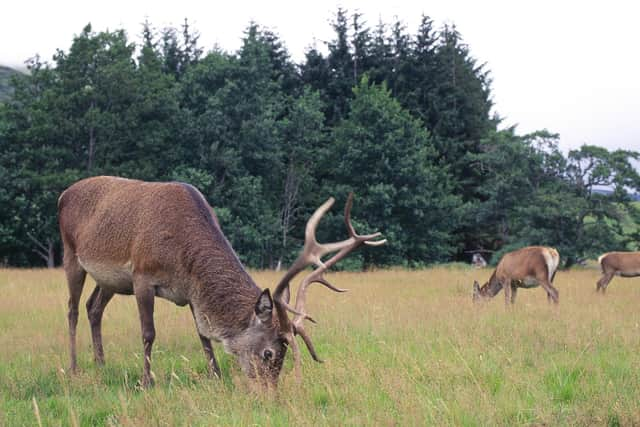Scotland's long-term vision for halting loss of species and boosting nature laid out in new biodiversity strategy
The move is among a raft of long-term ambitions set out in the new Scottish biodiversity strategy, published in draft form on Tuesday.
Other initiatives include tougher controls on deer populations, setting up a “high-integrity” market for private investment in natural capital, and improving the conservation status of seabirds. Introducing fishing restrictions to protect vulnerable marine eco-systems, ensuring grouse moors sustain healthy biodiversity, and improving monitoring and action against pathogens and disease in wild birds are also key objectives of the strategy.
Advertisement
Hide AdAdvertisement
Hide AdThe strategy, which covers the period up to 2045, outlines the Scottish Government’s vision to restore the natural environment and halt loss of species and provide a framework of how that will be achieved.
It contains 26 priority actions focused on accelerating nature restoration, expanding and improving protected areas, supporting eco-friendly farming, fishing and forestry and boosting vulnerable species, with an overall target to halt loss of biodiversity and create a “nature-positive” Scotland by 2030.
According to the Government, the strategy, which is based on simultaneously tackling depletion of nature and climate change, is designed to deliver landscape-scale, transformative change, backed by evidence, and underpinned by statutory targets which will hold future governments to account.
Biodiversity, or biological diversity, is the variety of life on earth. Research has ranked the UK as one of the most nature-depleted countries in the world, with around 50 per cent of its biodiversity left – far below the global average of 75 per cent.
Scotland, which is home to an estimated 90,000 animal, plant and microbe species across a range of habitats, is only slightly better with about 56 per cent of its historical land-based biodiversity considered intact.


The 2019 State of Nature Scotland report found 49 per cent of Scottish species fell in abundance between 1994 and 2016. For seabirds, there was an average decline of 38 per cent across 12 species from 1986 to 2016.
The draft strategy, which will be finalised in 2023, has been unveiled by Scottish biodiversity minister and Greens MSP Lorna Slater at the United Nations summit on global biodiversity COP15, which is under way in Montreal, Canada.
“Just like climate change, the loss of species and degradation of our natural environment is an existential threat to humanity,” she said.” And just like climate change, the action needed is both urgent and transformative. That’s why the Scottish Government is clear that this is an emergency that requires an emergency response.”
Advertisement
Hide AdAdvertisement
Hide AdMs Slater added: “The strategy sets out a nature-positive vision for Scotland – one where biodiversity is regenerating and underpinning a healthy and thriving economy and society. A new investment plan, coupled with ambitious statutory targets, will be crucial to achieving that vision.
“At the heart of this strategy is collaboration. No one can tackle the nature emergency alone, and we are committed to an inclusive approach that engages with and enlists communities, business, farmers, land managers and decision-makers alike.”
Comments
Want to join the conversation? Please or to comment on this article.